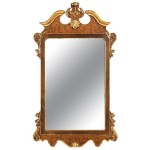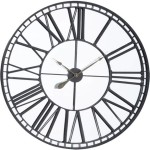The Strategic Placement of Mirrors in Dining Rooms: Functionality and Aesthetics
The integration of mirrors into interior design has long been a favored technique for enhancing spatial perception and manipulating light. In the context of dining rooms, mirrors offer a unique blend of functional and aesthetic advantages, capable of transforming the ambiance and perceived dimensions of the space. The strategic placement of a mirror in a dining room requires careful consideration of several factors, including the room's size, existing lighting conditions, architectural features, and desired aesthetic outcome.
Mirrors are not merely reflective surfaces; they are powerful tools that can significantly impact the overall feel of a dining room. The placement, size, and style of the mirror can contribute to a sense of formality, intimacy, or spaciousness. Understanding the principles behind leveraging mirrors effectively is crucial for achieving the desired effect and avoiding common pitfalls.
Expanding the Perceived Space
One of the most frequently cited benefits of incorporating a mirror into a dining room is its ability to create the illusion of increased space. This is particularly valuable in smaller dining areas where maximizing perceived square footage is paramount. A large, strategically placed mirror can effectively double the visual dimensions of the room, making it feel more open and airy. The reflective surface captures and extends the existing lines of the room, visually pushing back the walls and creating a sense of depth.
To achieve this effect, the size of the mirror should be proportionate to the size of the wall on which it is mounted. A full-length or nearly full-length mirror spanning a significant portion of the wall is often the most effective way to maximize the space-expanding illusion. The mirror should be positioned to reflect the broadest possible view of the room, ideally capturing elements such as windows, doorways, or open areas. Avoid placing the mirror in a location where it reflects only a blank wall or an unappealing view, as this will negate the desired effect and may even create a sense of claustrophobia.
Furthermore, the shape of the mirror can also influence the perceived spatial dimensions. A rectangular mirror, especially one oriented vertically, can elongate the room, making the ceiling appear higher. Conversely, a horizontal rectangular mirror can widen the room, making it feel broader. Round or oval mirrors can soften the angularity of a room and create a more intimate atmosphere, but they may not be as effective at maximizing the feeling of spaciousness.
Enhancing Natural and Artificial Light
In addition to expanding the perceived space, mirrors play a crucial role in amplifying both natural and artificial light within a dining room. By reflecting light back into the room, a mirror can significantly brighten the space, reducing the reliance on artificial lighting and creating a more inviting ambiance. This is particularly beneficial in dining rooms that receive limited natural light due to their orientation or the presence of surrounding structures.
To maximize the light-enhancing properties of a mirror, it should be positioned opposite or adjacent to a window or light source. This allows the mirror to capture and reflect the incoming light, effectively doubling its intensity and distributing it throughout the room. The mirror's surface should be kept clean and free of smudges or dust to ensure optimal reflectivity. The type of glass used in the mirror can also affect its light-reflecting capabilities; opt for high-quality, clear glass for the best results.
The type of artificial lighting used in the dining room can also impact the effectiveness of the mirror in enhancing illumination. Warm-toned lighting, such as incandescent or halogen bulbs, will create a cozy and inviting atmosphere when reflected in the mirror. Cool-toned lighting, such as LED or fluorescent bulbs, will produce a brighter and more modern feel. Experimenting with different lighting options and mirror placements can help to achieve the desired level of brightness and overall ambiance.
It is important to consider the potential for glare when positioning a mirror to reflect light. Direct sunlight reflecting off the mirror can create harsh glare and discomfort, especially during peak hours of the day. To mitigate this, consider using window treatments such as blinds or curtains to diffuse the sunlight or strategically angle the mirror to avoid direct reflection. Similarly, avoid placing the mirror directly opposite a bright artificial light source to prevent glare and eye strain.
Creating a Focal Point and Adding Visual Interest
Beyond their functional benefits, mirrors can also serve as decorative elements, adding visual interest and creating a focal point within the dining room. A well-chosen mirror can complement the existing décor, reflect the room's style, and enhance its overall aesthetic appeal. The frame of the mirror, in particular, can play a significant role in determining its visual impact and integrating it seamlessly into the room's design.
The style of the mirror frame should be consistent with the overall design aesthetic of the dining room. A minimalist dining room might benefit from a frameless mirror or a mirror with a sleek, understated frame. A traditional dining room might call for a more ornate frame, such as one with intricate carvings or gilded details. A rustic dining room might feature a mirror with a frame made of reclaimed wood or distressed metal.
The shape of the mirror can also contribute to its visual appeal. A uniquely shaped mirror, such as an octagon or a sunburst design, can serve as a striking focal point and add a touch of personality to the room. Consider the proportions of the mirror in relation to the wall on which it is mounted. A mirror that is too small will appear insignificant and may get lost in the overall design. A mirror that is too large may overwhelm the space and feel disproportionate.
Furthermore, the objects reflected in the mirror can also contribute to its visual interest. Carefully consider what the mirror will reflect and ensure that it captures appealing elements such as artwork, plants, or decorative objects. Avoid placing the mirror in a location where it reflects clutter or unsightly features. The goal is to create a visually pleasing and harmonious reflection that enhances the overall aesthetic of the dining room.
The height at which the mirror is mounted is also important. Generally, the center of the mirror should be at eye level for the average viewer. This ensures that the mirror is functional as well as aesthetically pleasing. However, the optimal height may vary depending on the specific design of the room and the objects that are being reflected. Experiment with different heights to find the placement that best achieves the desired visual effect.
In conclusion, the strategic placement of a mirror in a dining room offers a multitude of benefits, including expanding the perceived space, enhancing natural and artificial light, and creating a focal point and adding visual interest. By carefully considering the size, shape, style, and placement of the mirror, it is possible to transform the ambiance of the dining room and create a more inviting and aesthetically pleasing space.

How To Decorate Your Home With Mirrors In Some Stunning Ways World Inside Pictures Mirror Dining Room Luxury Elegant

Spice Up Your Dining Room With Mirrors

Transform Your Dining Room With A Mirror Decoholic

Dining Room Update Vertical Vs Horizontal Buffet Mirror
:strip_icc()/dining-room-mirror-ideas-1-ashley-montgomery-b90b98cab74443e9ab4f9d5e9f6ac2d2.jpeg?strip=all)
17 Dining Room Mirror Ideas That Ll Dress Up Your Walls

Premium Photo Interior Of Dining Room Modern Style With Chandelier And Wall Mirror Decorate

Transform Your Dining Room With A Mirror Decoholic

49 Best Dining Room Mirror Wall Ideas Decor

Should I Need A Dining Room Mirror Ideas

Dining Room Mirror Ideas Glass Genius








